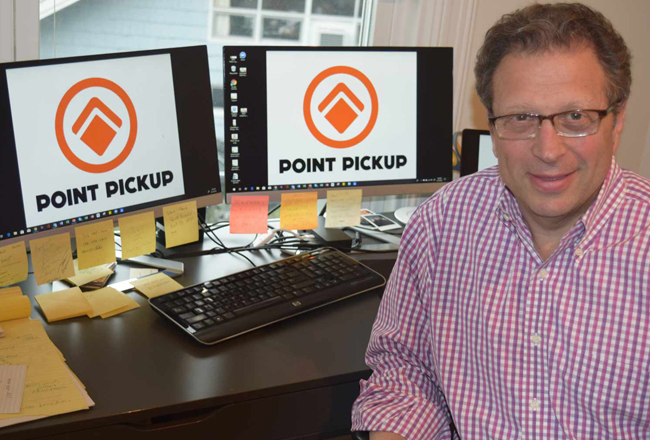Point Pickup Technologies helps retailers meet delivery needs

At the beginning of the decade, Tom Fiorita was running a Greenwich hedge fund and tracking the rise of Amazon. Earlier in his career, Fiorita worked as a Pepsi-Cola district sales manager in the Boston metro area and he was cognizant of the role of logistics and delivery in the consumer goods world.
“Looking at Amazon from 2009 to 2012, we realized it was going to change the landscape of retail and the landscape of delivery, and how delivery was going to change how we all operate,” he recalled.
Fiorita closed his hedge fund in 2012 and focused on consulting while plotting his next career move. One day, while driving through Greenwich, he realized that many of the traditional brick-and-mortar retailers were not ready to do market share combat with Jeff Bezos”™ e-commerce behemoth.
“Amazon had two things the retailers didn”™t know very well: distribution and delivery and online ordering, and the ability to showcase their wares on a website,” he said.
Fiorita incorporated Point Pickup Technologies in 2015 with the goal of trying to level the proverbial playing field between Amazon and traditional retailers. After joining a number of chambers of commerce and conversing with retailers, he realized that he was facing a bigger problem than he anticipated.
“The majority of people who owned the stores were baby boomers and I found a majority of these retail shop owners were not buying into the technology portion of this all happening, both education-wise and investment,” he said. “They all were scared but didn”™t know what to do.”
As Fiorita began to build a driver database, he also observed that some of the larger retail chains shared the lack of high-tech savvy when it came to this aspect of logistics technology. He received a surprise cold call from Target, which was planning to turn its stores into distribution centers. The retailer asked Fiorita if he could help with deliveries over the so-called “final mile” between the store and the consumer.
“We were out there recruiting everyday people who were driving a Honda or a Jeep, so then why couldn”™t we also recruit people who owned cargo vans and 26-foot trucks or tractor-trailers for same-day deliveries?” he continued. “If everything is going to be delivered in two days or less, they are going to have to have the movement and the supply chain is going to change drastically as stores become distribution centers.”
Fiorita accepted Target”™s invitation. “Six weeks later, we were helping them move products from their stores to the post office, which then delivered to your house, all under two days,” he said. “Then they asked if we could have some larger vehicles, have our tractors pull their trailers 10 or 15 miles from these new flow centers.”
The Greenwich-headquartered Point Pickup Technologies began to evolve into what Fiorita called a nationwide “enterprise-based B2B2C business.” He noted that his customers “are not the consumers or the local retailers, but enterprise-based businesses with hundreds or thousands of stores. We apply our technology through an API connection and we become the de facto delivery platform of standardized capacity in the United States. If you need an everyday person or you need a truck, you come to the platform, plug in and now that we”™ve aggregated all of that for you, legally, insurance, quoting, sourcing, track and tracing and payment. All wrapped up in one nice standardized platform.”
Walmart joined Target as a client and Fiorita stated “those two big guys keep us quite busy.” Smaller retailers and direct-to-consumer entities such as meal-preparation services are also among the clients, but Fiorita has no interest in working with Amazon.
“I am a little bit of an underdog guy and I am building a platform for everybody else but them,” he added. “And my clients are happy that I don”™t work with them.”
Fiorita keeps a constant vigil on his driver base, acknowledging competition for drivers from operations such as Uber and Lyft and food delivery services. Fiorita is focused on what he dubbed a “precision-matching technology for the correct driver” while ensuring his drivers are eager for their specific assignments.
“If we have many of the same drivers visiting your store, if we have 80% of the time 15 or 20 of the same drivers, there is an increase in familiarity and responsibility and better performance,” he said. “We don”™t need as many drivers. We need good drivers doing specific work. Many drivers on our system want to work 10 miles away from where they live and we know the average distance from the stores we do is about five miles. We can build the best technology and the best processes, but if you don”™t build the best culture you are going to lose.”